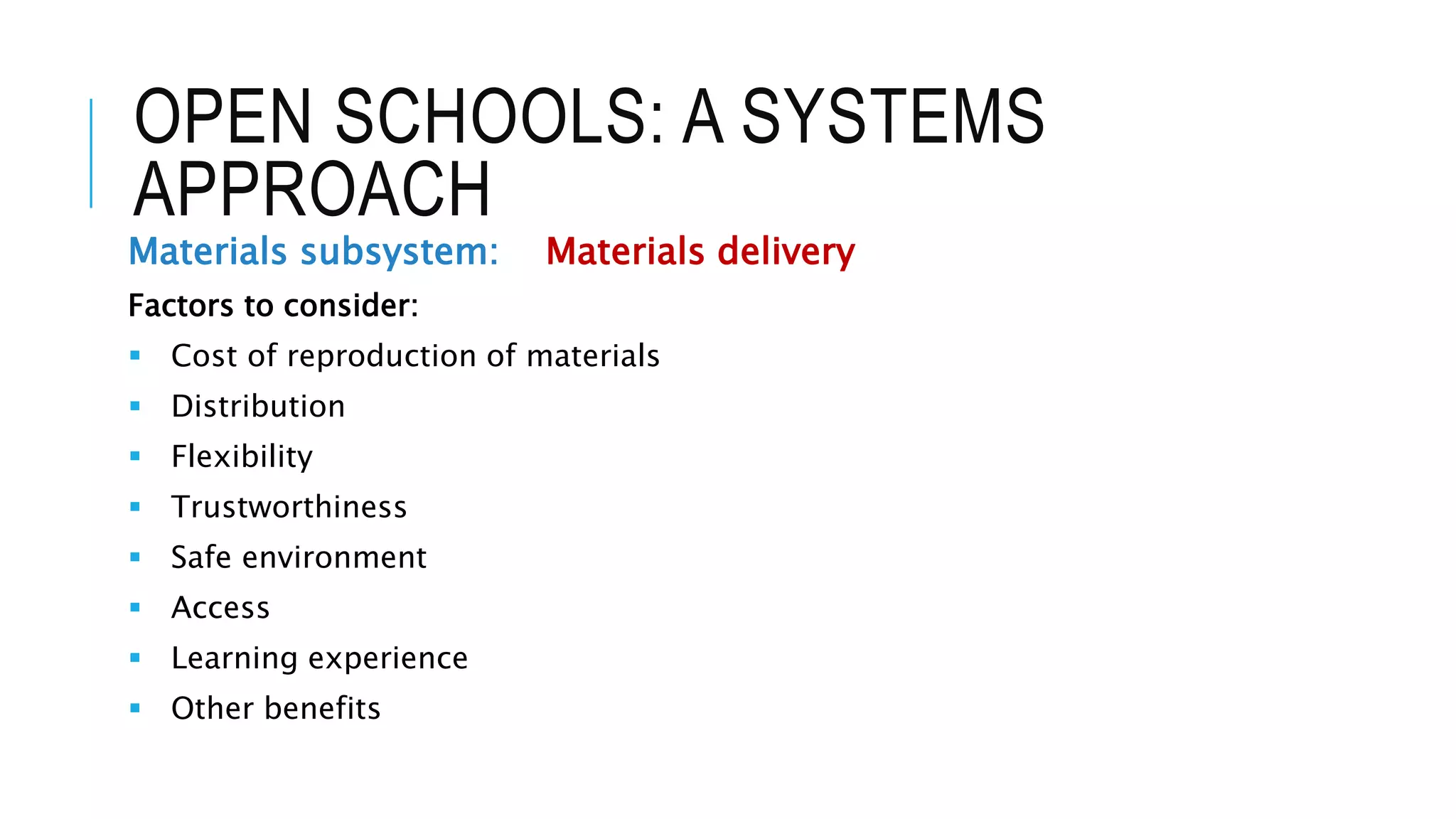This document discusses open schooling and the implications of technology-enabled open schooling. It begins with introducing participants and defining open schooling. Open schooling is described as providing flexible learning opportunities utilizing various means of content delivery, including information and communication technologies (ICTs) to mitigate physical separation between teachers and learners. Key differences between open and conventional schooling are outlined. The document then discusses considerations for open schooling systems and models, including legal structures and modes of delivery. It proposes a vision for open schooling in Guyana and outlines COL's open and innovative schooling model. Finally, it discusses taking a systems approach to open schooling, identifying key subsystems including materials, learner support, and administration.































































































